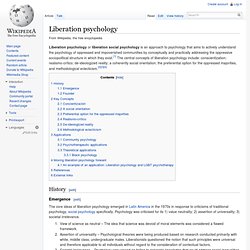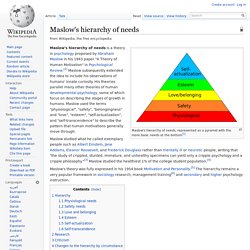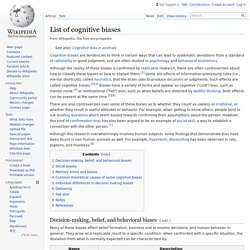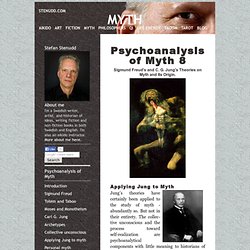

10 More Brilliant Social Psychology Studies. 10 Brilliant Social Psychology Studies. Ten of the most influential social psychology experiments.

“I have been primarily interested in how and why ordinary people do unusual things, things that seem alien to their natures.Why do good people sometimes act evil? Why do smart people sometimes do dumb or irrational things?” –Philip Zimbardo Like eminent social psychologist Professor Philip Zimbardo (author of The Lucifer Effect: Understanding How Good People Turn Evil), I’m also obsessed with why we do dumb or irrational things. The answer quite often is because of other people – something social psychologists have comprehensively shown. Over the past few months I’ve been describing 10 of the most influential social psychology experiments.
Each one tells a unique, insightful story relevant to all our lives, every day. 1. The ‘halo effect’ is a classic social psychology experiment. » Read on about the halo effect -» 2. » Read on about cognitive dissonance -» Liberation psychology. Liberation psychology or liberation social psychology is an approach to psychology that aims to actively understand the psychology of oppressed and impoverished communities by conceptually and practically addressing the oppressive sociopolitical structure in which they exist.[1] The central concepts of liberation psychology include: conscientization; realismo-crítico; de-ideologized reality; a coherently social orientation; the preferential option for the oppressed majorities, and methodological eclecticism.[2][3][4] History[edit] Emergence[edit]

Bloom's Taxonomy Blooms Digitally, Andrew Churches. 4/1/2008 By: Andrew Churches from Educators' eZine Introduction and Background: Bloom's Taxonomy In the 1950's Benjamin Bloom developed his taxonomy of cognitive objectives, Bloom's Taxonomy.

This categorized and ordered thinking skills and objectives. Bloom's Revised Taxonomy. Maslow's hierarchy of needs. Maslow's hierarchy of needs, represented as a pyramid with the more basic needs at the bottom[1] Maslow's hierarchy of needs is a theory in psychology proposed by Abraham Maslow in his 1943 paper "A Theory of Human Motivation" in Psychological Review.[2] Maslow subsequently extended the idea to include his observations of humans' innate curiosity.

His theories parallel many other theories of human developmental psychology, some of which focus on describing the stages of growth in humans. Maslow used the terms "physiological", "safety", "belongingness" and "love", "esteem", "self-actualization", and "self-transcendence" to describe the pattern that human motivations generally move through. Maslow's theory was fully expressed in his 1954 book Motivation and Personality.[5] The hierarchy remains a very popular framework in sociology research, management training[6] and secondary and higher psychology instruction. Hierarchy. Cognitive Development. Intelligence Forms. Links to hundreds of Psychology studies running on the internet. Alphabetical Index of all Psychiatric Disorders at ALLPSYCH Online. Topics. List of cognitive biases. Cognitive biases are tendencies to think in certain ways that can lead to systematic deviations from a standard of rationality or good judgment, and are often studied in psychology and behavioral economics.

There are also controversies over some of these biases as to whether they count as useless or irrational, or whether they result in useful attitudes or behavior. For example, when getting to know others, people tend to ask leading questions which seem biased towards confirming their assumptions about the person. However, this kind of confirmation bias has also been argued to be an example of social skill: a way to establish a connection with the other person.[7] Although this research overwhelmingly involves human subjects, some findings that demonstrate bias have been found in non-human animals as well. For example, hyperbolic discounting has been observed in rats, pigeons, and monkeys.[8] Decision-making, belief, and behavioral biases[edit] Social biases[edit] Debiasing[edit] The Top 10 Psychology Studies of 2010. The end of 2010 fast approaches, and I'm thrilled to have been asked by the editors of Psychology Today to write about the Top 10 psychology studies of the year.
I've focused on studies that I personally feel stand out, not only as examples of great science, but even more importantly, as examples of how the science of psychology can improve our lives. Each study has a clear "take home" message, offering the reader an insight or a simple strategy they can use to reach their goals , strengthen their relationships, make better decisions, or become happier. If you extract the wisdom from these ten studies and apply them in your own life, 2011 just might be a very good year. 1) How to Break Bad Habits If you are trying to stop smoking , swearing, or chewing your nails, you have probably tried the strategy of distracting yourself - taking your mind off whatever it is you are trying not to do - to break the habit.
J. 2) How to Make Everything Seem Easier J. The Problem of Perception. First published Tue Mar 8, 2005; substantive revision Fri Feb 4, 2011 Sense-perception—the awareness or apprehension of things by sight, hearing, touch, smell and taste—has long been a preoccupation of philosophers.

One pervasive and traditional problem, sometimes called “the problem of perception”, is created by the phenomena of perceptual illusion and hallucination: if these kinds of error are possible, how can perception be what it intuitively seems to be, a direct and immediate access to reality? Epistemological Problems of Perception. First published Thu Jul 12, 2001; substantive revision Sat May 5, 2007 The historically most central epistemological issue concerning perception, to which this article will be almost entirely devoted, is whether and how beliefs about physical objects and about the physical world generally can be justified or warranted on the basis of sensory or perceptual experience—where it is internalist justification, roughly having a reason to think that the belief in question is true, that is mainly in question (see the entry internalist vs. externalist conceptions of epistemic justification).

This issue, commonly referred to as “the problem of the external world,” divides into two closely related sub-issues, which correspond to the first two main sections below. 1. How to Detect Lies - body language, reactions, speech patterns. Interesting Info -> Lying Index -> How to Detect Lies Become a Human Lie Detector (Part 1) Warning: sometimes ignorance is bliss.

After gaining this knowledge, you may be hurt when it is obvious that someone is lying to you. The following deception detection techniques are used by police, forensic psychologists, security experts and other investigators. 10 Psychological States You've Never Heard Of — And When You Experienced Them. The Phobia List. Jung Circle. Transpersonal Psychology. Lucid Dreaming Research. Psychological ("personality") Types. Psychological ("personality") Types According to Jung's theory of Psychological Types we are all different in fundamental ways.

One's ability to process different information is limited by their particular type. These types are sixteen. People can be either Extroverts or Introverts, depending on the direction of their activity ; Thinking, Feeling, Sensing, Intuitive, according to their own information pathways; Judging or Perceiving, depending on the method in which they process received information. Extroverts vs. Extroverts are directed towards the objective world whereas Introverts are directed towards the subjective world. Sensing vs. Index of free personality tests and intelligence tests. Personality types. The Myers & Briggs Foundation. Carl Jung Resources for Home Study and Practice. Psychoanalysis of MYTH - Applying Jung. Jung's theories have certainly been applied to the study of myth - abundantly so.

But not in their entirety. The collective unconscious and the process toward self-realization are psychoanalytical components with little meaning to historians of religion, and dreadfully difficult to work with when examining mythological material. The archetypes, on the other hand, have flourished in interpretations of myths. Campbell, Eliade and others have not exactly adapted the archetypes as such, although several of those scholars admit to their existence and importance, but they have used the idea of extracting symbolic elements from the myths, and comparing these across cultural borders. The Center for Story and Symbol, Joseph Campbell and Archetypal Psychology. The Secret Language of Symbols. A Guide to The Structure of Spiritual Emblems There is a secret language we all recognize, but few are fluent in- the language of symbols.
Symbols surround us in myriad forms and form an inextricable part of our daily lives, yet unlike our spoken languages, schooling in symbolism is left to the individual initiative. Even in religious teaching, symbols are presented as emblems of belonging, mere historical artifacts one wears to identify with one’s faith. Religion and Society 32:002. The Heroes of Myth and Folklore: Part One – Defining a Hero. Herakles battling the Hydra There is a special genre of tales in the texts of Hellenic mythology that recounts the deeds of extraordinary men and women such as Herakles, Perseus, Jason and Medeia to name but a few.
These larger-than-life people are called the Heroes. Their stories derive from the most ancient form of the oral tradition and have evolved through the ages into the symbolic and historical mythology of mortals who were granted immortality through their destinies and the homage and remembrance of their descendants. Carl Jung - Collective Unconscious. Concept of Collective Unconscious at Jung Jung concept of collective unconscious is based on his experiences with schizophrenic persons since he worked in the Burgholzli psychiatric hospital. Though initially Jung followed the Freudian theory of unconscious as the psychic strata formed by repressed wishes, he later developed his own theory on the unconscious to include some new concepts.
The most important of them is the archetype. Archetypes constitute the structure of the collective unconscious - they are psychic innate dispositions to experience and represent basic human behavior and situations. Thus mother-child relationship is governed by the mother archetype. Archetypes%2B001.jpg (Image JPEG, 400x324 pixels) The Sequence of Archetypes in Individuation. DynaPsych Table of Contents.
Understanding the Eight Jungian Cognitive Processes / Eight Functions Attitudes. Jung Carl Gustav - Site d'information et de ressources jungiennes cgjung.net. Carl Jung on Richard Wilhelm - School of Wisdom. Dissociative Disorders-What you need to know-FAQs - StumbleUpon. How to Win Friends and Influence People by Dale Carnegie. The Sequence of Archetypes in Individuation. The Five Habits Of Highly Innovative Leaders.
Group Psychology. Freud Id Ego Superego Handout doc free ebook download from shs.westport.k12.ct.us.